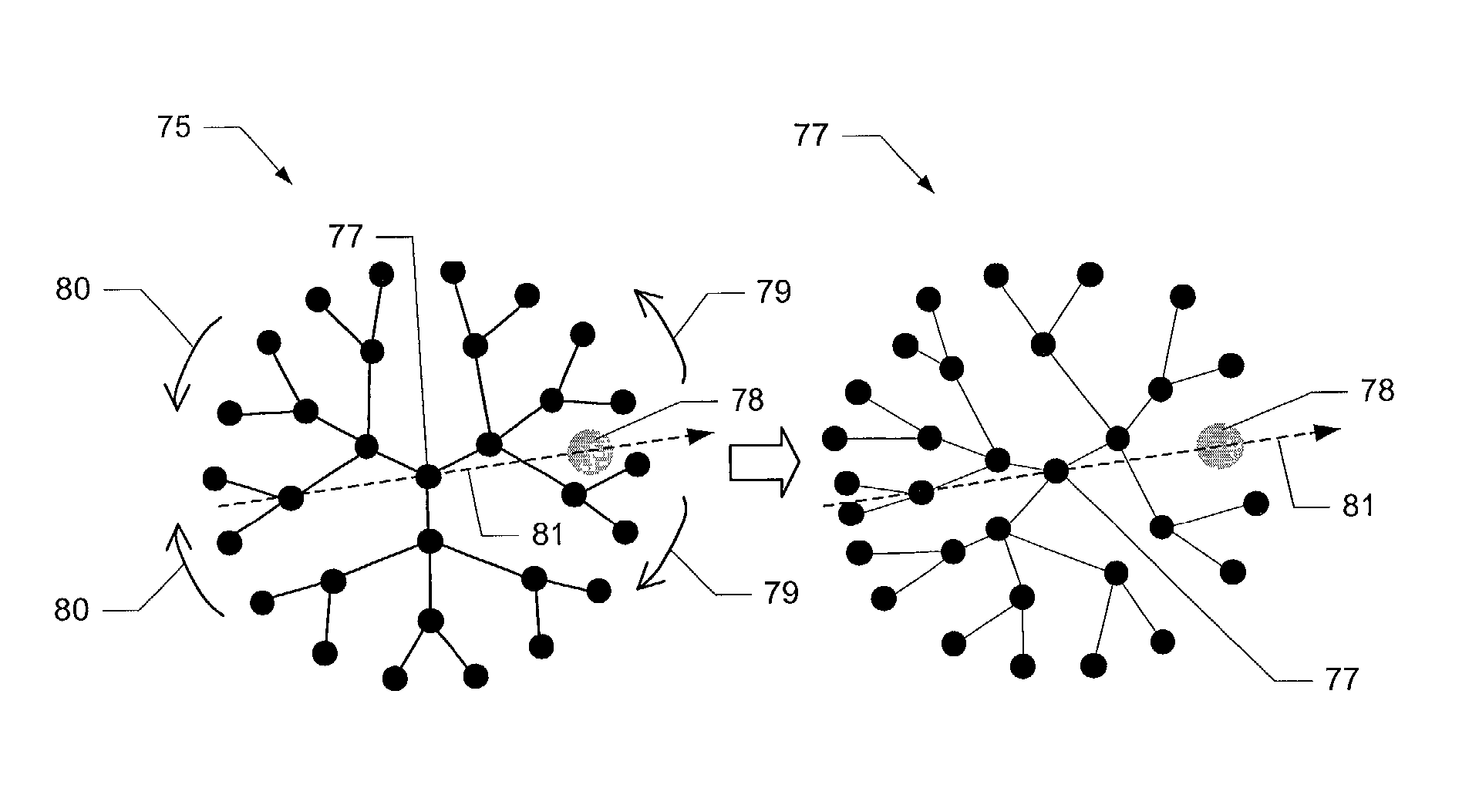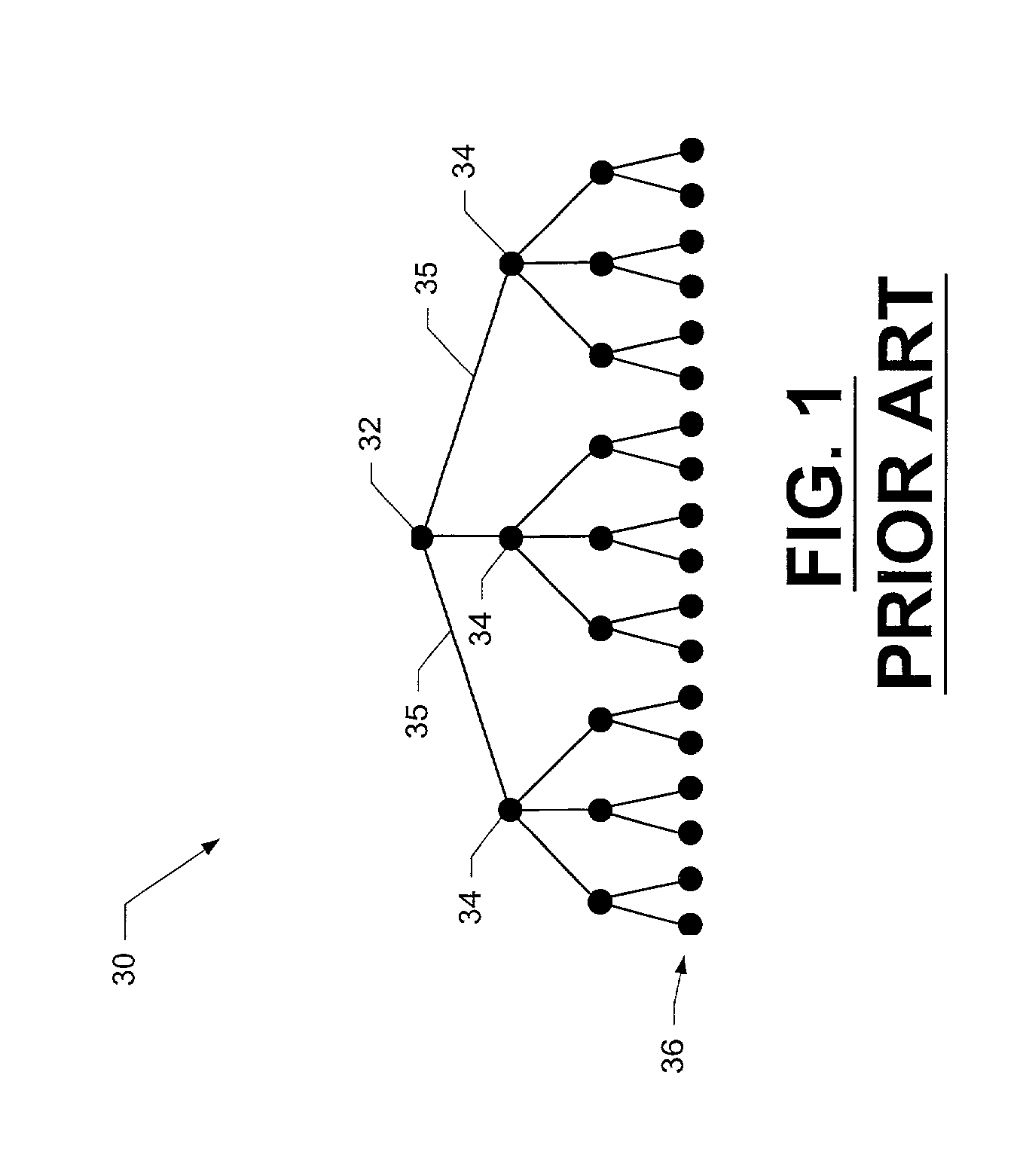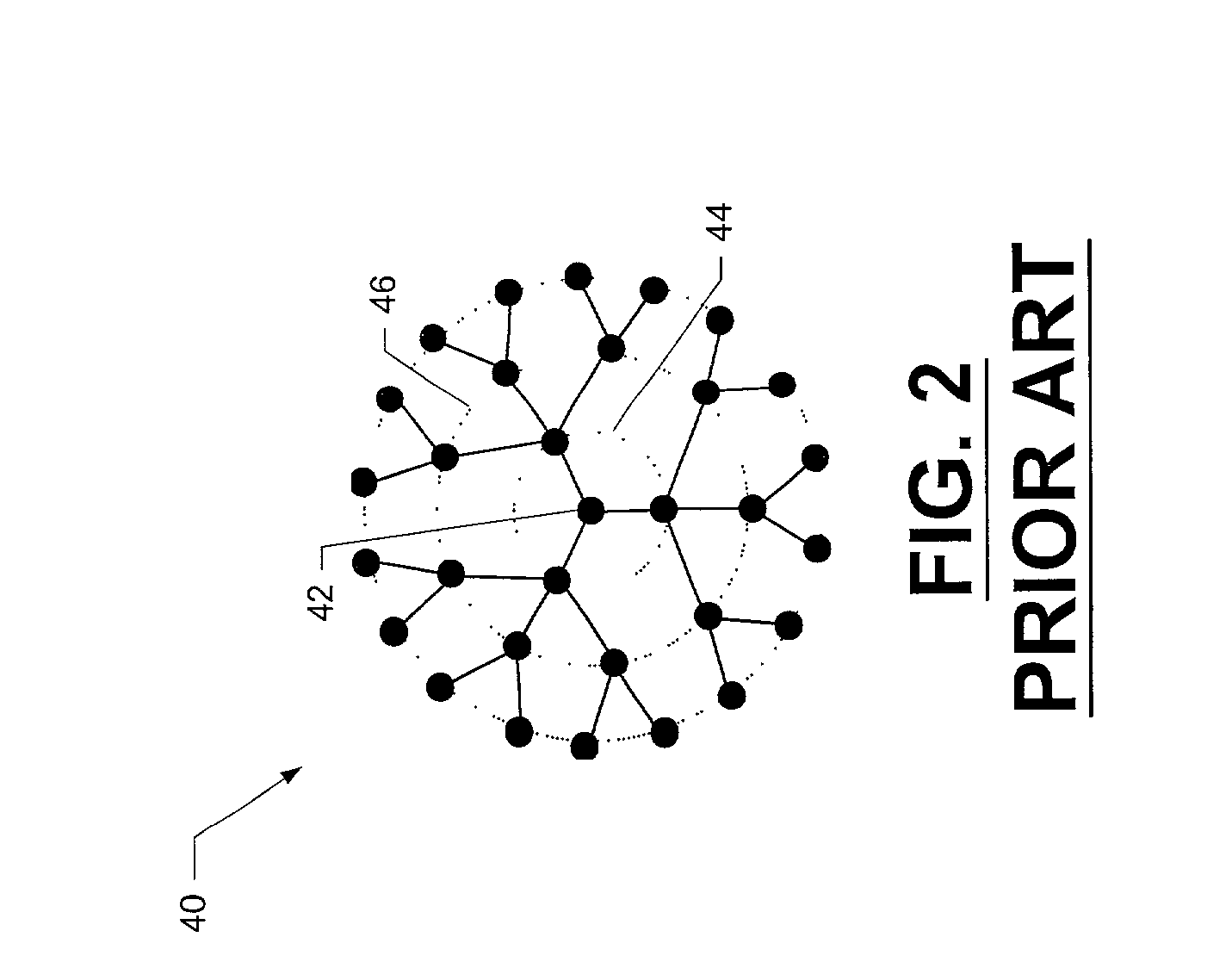Computer-implemented node spreader
a spreader and computer technology, applied in computing, instruments, drawing from basic elements, etc., can solve the problems of edge edges, nodes, and space available, and achieve the effect of reducing the amount of space available, and reducing the number of nodes
- Summary
- Abstract
- Description
- Claims
- Application Information
AI Technical Summary
Problems solved by technology
Method used
Image
Examples
Embodiment Construction
[0050] Consider three nodes (A 182, B 184, and C 186) and a focus point F 180 as shown in FIG. 9. Assume the following values: A={0.985, 0.174}; B={0.0, 1.0}; C={-0.530, 0.530}; F={0.5, 0.0}; fac=10 (which is a user-supplied value for maximum angular distortion).
[0051] The calculation of the distortion strength factor, dt, may be done before looping through the nodes in the following manner. With the x and y values for the focus position known (that is, fx=0.5 and fy=0.0), the distortion strength is:
dt=fac*sqrt(fx*fx+fy*fy)
dt=10*sqrt(0.5*0.5+0*0)
dt=10*0.5
dt=5
[0052] The focus angle may be calculated as:
focustheta=atan(fy,fx)
focustheta=atan(0.0, 0.5)
focustheta=0.degree.
[0053] Now, consider node A. Here tx=0.985 and ty=0.174. The original theta angle of node A is:
theta=atan(ty,tx)
theta=atan(0.174, 0.985)
theta=5.degree.
[0054] The relative theta angle value is calculated as:
reltheta=(theta-focustheta) / 180
reltheta=(5-0) / 180
reltheta=(5 / 180)
reltheta=0.028
[0055] Now the distortion function i...
PUM
 Login to View More
Login to View More Abstract
Description
Claims
Application Information
 Login to View More
Login to View More - R&D
- Intellectual Property
- Life Sciences
- Materials
- Tech Scout
- Unparalleled Data Quality
- Higher Quality Content
- 60% Fewer Hallucinations
Browse by: Latest US Patents, China's latest patents, Technical Efficacy Thesaurus, Application Domain, Technology Topic, Popular Technical Reports.
© 2025 PatSnap. All rights reserved.Legal|Privacy policy|Modern Slavery Act Transparency Statement|Sitemap|About US| Contact US: help@patsnap.com



